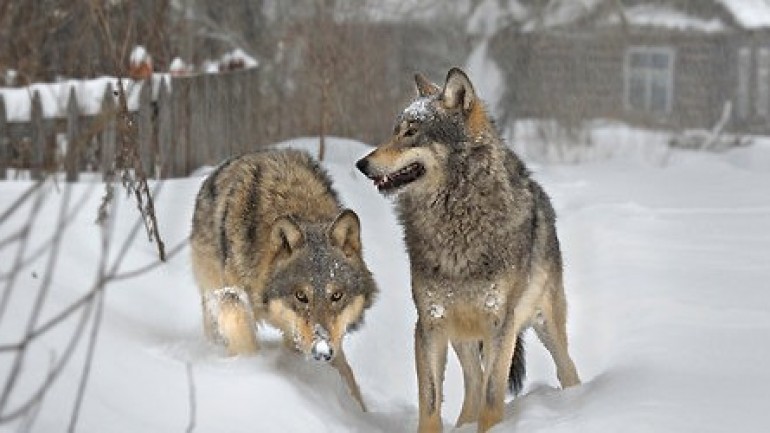What happens to nature after a nuclear accident? And how does wildlife deal with the world it inherits after human inhabitants have fled?
In 1986 a nuclear meltdown at the infamous Chernobyl power plant in present-day Ukraine left miles of land in radioactive ruins. Residents living in areas most contaminated by the disaster were evacuated and relocated by government order, and a no-man’s land of our own making was left to its own devices. In the ensuing 25 years, forests, marshes, fields and rivers reclaimed the land, reversing the effects of hundreds of years of human development. And surprisingly, this exclusion zone, or “dead zone,” has become a kind of post-nuclear Eden, populated by beaver and bison, horses and birds, fish and falcons – and ruled by wolves.
Access to the zone is now permitted, at least on a limited basis, and scientists are monitoring the surviving wildlife in the area, trying to learn how the various species are coping with the invisible blight of radiation. As the top predators in this new wilderness, wolves best reflect the condition of the entire ecosystem because if the wolves are doing well, the populations of their prey must also be doing well. Accordingly, a key long-term study of the wolves has been initiated to determine their health, their range, and their numbers.
Radioactive Wolves examines the state of wildlife populations in Chernobyl’s exclusion zone, an area that, to this day, remains too radioactive for human habitation.





It’s awesome to see wildlife thriving in the shadow of such a tragic nuclear disaster, 30 years later. Great documentary. ??
The best nature movie I’ve seen! Seems like Mother Earth shows us that the power of life always will rule but maybe the humans will manage to destroy themselves so that the animals can live and run freely in Peace & Harmony?
This is a disneyish portrayal of the true situation which is not consistent with this message. All of the scientific studies of birds, bees, butterflies, and mammals show that there are many fewer numbers of individuals in area of high contamination. The message in this film is pure fantasy. See http://cricket.biol.sc.edu/chernobyl/
What are you, the documentary police? Do us all a favor, pull your head out of your ass and smell the fresh air.
Nice to see someone else actually thinks while they watch these documentaries. Finding more and more bullshit being posted within the past 6-8 months on this site..
There are 2 families of nuclear reactors, the 1 you’ve most likely never heard of Thorium, or LFTR reactors are magnitudes cheaper safer & cleaner, they just have 1 great fault(??????) they don’t make bombs. So all this nuclear contamination is completely unnecessary, the only reason uranium/plutonium reactors exist is to make plutonium239 for nuclear weapons.
http://youtu.be/uK367T7h6ZY
Such a good show! I hope the Zone remains protected always.
Mauricio Torres – from Brazil — Wonderful program and filmwork. Make me think about men, master of nature but slaves of themselves
Awesome, thank you.
Amazing filmwork, beautiful animals, a weirdly uplifting program about a terrible disaster.